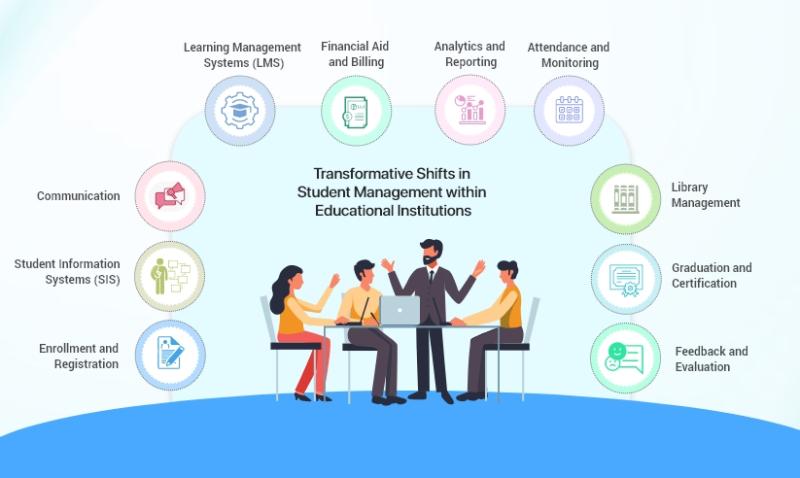Transforming Educational Institutions: The Role of ERP Software in Modernizing School, Colleges, Ins

ERP (Enterprise Resource Planning) software is a type of integrated system that manages and automates an organization’s core business processes. ERP now a days considered to be the backbone of any organization, as It consolidates various functions such as finance, HR, supply chain, and operations into a single platform, enabling seamless data flow and improved efficiency across departments. This unified approach helps organizations to streamline processes, enhance data accuracy, and make informed decisions. Likewise, the campus or academic ERP software integrates various administrative and academic functions into one system. SymphonyX, one of its kind, handles tasks like enrollment, scheduling, grading, and financial management. One single ERP solution into any educational institutes like schools, colleges and universities have the added advantages to streamline operations, improved data accuracy, enhanced communication, and better resource management. It also facilitates data-driven decision-making and reduces administrative workload.
Apart from these, the SymphonyX software is crucial in campus administration because it also reduces manual errors, improves efficiency and resource optimization. It centralizes data, making it easier to manage student records, faculty information, and financial transactions. This integration enhances decision-making through real-time analytics and reporting. Additionally, it simplifies administrative tasks, freeing up time for staff to focus on strategic initiatives and improving the overall experience for students and faculty. Campus ERP software is designed to streamline and integrate various administrative functions within an educational institution. Here are some key features of ERP software in campus administration:
1. Student Information Management
- Admissions and Enrollment: Handles application processes, admissions, and enrollment procedures.
- Student Records: Maintains detailed student profiles, including academic history, personal information, and attendance records.
- Grade Management: Tracks and reports grades, academic progress, and transcripts.
2. Academic Management
- Course Management: Facilitates course creation, scheduling, and management.
- Timetable Management: Automates scheduling for classes, exams, and faculty.
- Curriculum Management: Assists in designing and updating curriculum and course content.
3. Financial Management
- Fee Management: Manages tuition fees, billing, and payments.
- Budgeting and Accounting: Handles institutional budgeting, accounting, and financial reporting.
- Scholarships and Financial Aid: Manages scholarships, grants, and financial aid applications.
4. Human Resources Management
- Faculty Management: Manages faculty records, payroll, and contracts.
- Staff Management: Handles staff records, attendance, and HR functions.
- Performance Evaluation: Tracks faculty and staff performance and evaluations.
5. Library Management
- Catalog Management: Maintains library catalogs, book loans, and returns.
- User Access: Manages student and faculty access to library resources.
6. Attendance Management
- Class Attendance: Records and monitors student attendance in classes and exams.
- Absence Tracking: Alerts and manages student absences and tardiness.
7. Communication Tools
- Notifications: Sends automated notifications for academic deadlines, events, and announcements.
- Messaging Systems: Facilitates communication between students, faculty, and administration.
8. Reports and Analytics
- Academic Reports: Generates reports on student performance, attendance, and academic progress.
- Financial Reports: Provides insights into financial health and budgeting.
- Custom Analytics: Offers customizable analytics to support decision-making.
9. Integration Capabilities
- Third-Party Integration: Connects with other systems such as Learning Management Systems (LMS) or Student Information Systems (SIS).
- Data Import/Export: Facilitates data transfer and integration with external databases.
10. Security and Compliance
- Data Security: Ensures secure access to sensitive information with role-based permissions and encryption.
- Compliance: Adheres to regulations and standards, such as FERPA (Family Educational Rights and Privacy Act) for educational institutions.
11. User Access and Interface
- Self-Service Portals: Provides access to personal and academic information for students and faculty.
- Mobile Access: Supports mobile devices for on-the-go access to important information.
For more details visit: https://www.symphonyx.in/ or +911244894100
Post Your Ad Here
Comments